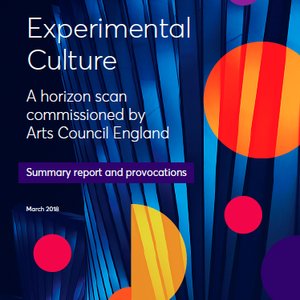The concept of disruptive innovation refers to technologies that disrupt existing networks supporting the status quo for how things are done. Documenting historic buildings and archaeological monuments using measurements and monitoring damage through visual inspection are two examples of traditional management practices. In many areas, capture technologies such as terrestrial laser scanning are revolutionizing these practices. Digital technologies are “disrupting” the ways we document, manage and analyse the tangible and intangible heritage. We are creating online archives, 3D replicas and reconstructions of heritage sites, virtual exhibits and online tours. But what are the implications for communities and audiences?
The
Nesta report (which was commissioned by Arts Council England) found that digital technology has not yet transformed access to arts and culture. Although digital disruption has lead to wholesale changes in the way people access music, video games, television and film; arts and culture are still rooted in physical venues, artefacts and in-person performances. The slower pace of digital transformation is both good and bad for arts and culture. Visitor patterns remain stable, but technology is changing the expectations of audiences and especially those of younger people.
Use of digital cultural content is increasing. People are better connected and have access to multiple applications, information sources and channels. There are new possibilities to add value and to engage with audiences through multiple social media channels, platforms and aggregators. This doesn’t make it easier for cultural institutions; there are as many choices as there are opportunities.
Digital technologies have disrupted the way we carry out archaeology in the field and manage historic buildings, and are creating huge quantities of digital data. We know that there is huge potential to change access to the cultural heritage, but how will the future look? How can we embrace the opportunities that new, smart technologies are bringing? The Arts Council report suggests four areas:
- Experimentation, ranging from pragmatic and small-scale tests to large-scale trials to build capacity and resilience to change.
- Leveraging data – extracting value from data, optimising processes, understanding audiences and measuring the benefits created for users.
- Partnerships to reach new audiences, develop the specialist skills of the workforce, tap new sources of revenue, create efficiencies through shared services, and to experiment with new technologies.
- Reaching wider audiences – strategies to extend the benefits of culture more widely by attracting new people and groups.
It would be interesting to hear from CARARE members about their experiences of innovating or experimenting with new tools, technologies and methods.
Contact us

